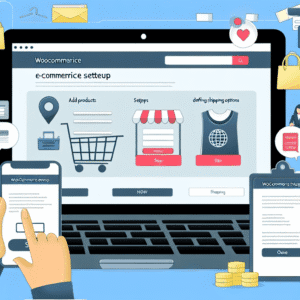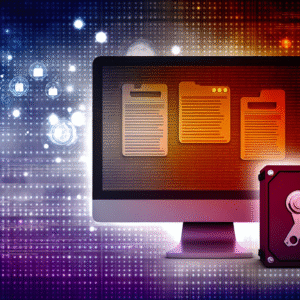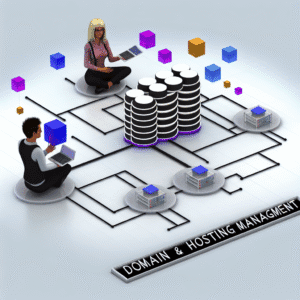Customer service has emerged as a powerful lever that can either make or break a brand. Whether you’re running a brick-and-mortar store, an e-commerce platform, or a B2B enterprise, how you treat your customers directly impacts your reputation, customer retention, and bottom line.
Excellent customer service goes far beyond answering calls or responding to emails. It involves being responsive, helpful, and going the extra mile to ensure that every interaction leaves the customer satisfied—and ideally, delighted. In this blog post, we’ll explore how to embed these three pillars into your customer service strategy and elevate your brand’s customer experience.
Why Excellent Customer Service Matters
Before diving into the “how,” let’s understand the “why.” Here are a few compelling reasons why excellent customer service should be a top priority:
- Customer Retention: It costs 5 to 7 times more to acquire a new customer than to retain an existing one. Great service keeps customers coming back.
- Brand Reputation: Positive customer service experiences can lead to glowing reviews and word-of-mouth referrals. Conversely, poor service can damage your brand.
- Increased Revenue: Happy customers tend to buy more and are more likely to try new offerings or upgrades.
- Competitive Advantage: In saturated markets, exceptional service can be the key differentiator that gives your business an edge.
With that foundation in place, let’s explore how to provide excellent customer service by focusing on three key strategies: responsiveness, helpfulness, and going above and beyond.
1. Be Responsive: Speed + Attentiveness
In the age of instant gratification, speed is no longer a luxury—it’s an expectation. Customers want quick answers, fast solutions, and real-time engagement. Being responsive doesn’t just mean replying quickly; it means being available, attentive, and proactive.
A. Reduce Response Time
- Set Expectations: Use autoresponders to acknowledge inquiries and set realistic timelines for a more detailed response.
- Leverage Live Chat: A live chat tool can drastically reduce wait times and increase customer satisfaction.
- Prioritize Inquiries: Use ticketing systems or AI tools to triage customer issues based on urgency.
B. Be Present Across Channels
Customers expect support on their terms—email, phone, social media, chat, or in person. Make sure you’re accessible where your customers are:
- Monitor your social media DMs and comments.
- Respond to emails within 24 hours.
- Offer SMS support for time-sensitive issues.
- Provide 24/7 assistance through chatbots, when feasible.
C. Train for Active Listening
Responsiveness is not just about speed but understanding. Train your support team to:
- Listen without interrupting.
- Repeat back key points to confirm understanding.
- Ask clarifying questions to get to the heart of the issue.
Pro Tip: A slow but thoughtful response often outweighs a fast but generic one.
2. Be Helpful: Solve Problems Effectively and Empathetically
Responsiveness gets you in the door. Helpfulness keeps you there. Customers reach out because they need assistance—whether it’s a refund, a technical issue, or just information. Being helpful means addressing their needs efficiently and with empathy.
A. Empower Your Team
- Give Authority: Frontline staff should be empowered to make decisions (refunds, exchanges, upgrades) without needing layers of approval.
- Provide Resources: Equip your team with a robust knowledge base, product manuals, and FAQs.
- Encourage Collaboration: Use internal communication tools so team members can collaborate when a case needs escalation or cross-functional insight.
B. Build a Culture of Empathy
Empathy is the backbone of helpful service. Teach your team to:
- Acknowledge the customer’s emotions.
- Avoid blaming the customer or shifting responsibility.
- Use phrases like “I understand how frustrating that must be” or “Let’s see how I can fix this for you.”
C. Offer Clear and Simple Solutions
Customers hate being bounced around. Make sure you:
- Offer clear next steps.
- Avoid jargon and use simple language.
- Follow up to ensure the issue is resolved to their satisfaction.
Example: Instead of saying “We’ll escalate this to Tier 2 support,” try “I’m going to connect you with a technical expert who can fix this right away.”
3. Go the Extra Mile: Exceed Expectations
To deliver excellent customer service, don’t stop at solving the problem—surprise and delight your customers. Going the extra mile often doesn’t cost much but has huge returns in loyalty and goodwill.
A. Personalize the Experience
- Address customers by name.
- Remember repeat customers and their preferences.
- Tailor your communication based on their history with your brand.
Example: “Hi Rachel, I saw you ordered this item last month—just a heads-up that it’s back in stock with a 10% discount today.”
B. Follow Up After Resolution
Following up shows that you care beyond the transaction.
- Send a “Just checking in” email a few days after resolving an issue.
- Ask for feedback on their experience.
- Offer a discount or bonus as a thank-you.
C. Offer Unexpected Perks
- Handwritten thank-you notes
- Complimentary upgrades
- Birthday or anniversary discounts
- Fast-track shipping or exclusive previews
These small acts create memorable experiences that drive customer loyalty and brand love.
Common Customer Service Mistakes to Avoid
Providing excellent service also means avoiding common pitfalls. Here are a few to watch out for:
- Being defensive when a customer complains
- Failing to follow up on unresolved issues
- Providing inconsistent information across support channels
- Over-automating responses and losing the human touch
- Making promises you can’t keep
The Role of Technology in Customer Service
Modern tools can amplify your customer service efforts—when used correctly.
A. CRM Systems
Customer Relationship Management (CRM) systems like HubSpot, Salesforce, or Zoho help you:
- Track customer interactions
- Store preferences and history
- Provide consistent, informed support
B. AI and Chatbots
Use AI chatbots to:
- Answer FAQs instantly
- Route inquiries to the right department
- Provide 24/7 support coverage
Just be sure to maintain a human fallback option when the issue becomes complex.
C. Customer Feedback Tools
- Use surveys (e.g., NPS or CSAT) to gauge satisfaction.
- Monitor reviews on Google, Yelp, or Trustpilot.
- Use feedback to train staff and improve processes.
Building a Customer-Centric Culture
Excellent service must be a company-wide commitment, not just the responsibility of the support team.
A. Leadership Buy-In
When company leaders prioritize customer satisfaction, it filters down to every level. Encourage leaders to:
- Join customer calls
- Respond to reviews personally
- Recognize staff who provide great service
B. Cross-Department Collaboration
Product, marketing, sales, and service teams should all share insights to improve the customer experience.
- Share pain points discovered in support with the product team.
- Use support data to craft better marketing messages.
- Align sales promises with service capabilities.
C. Hire for Attitude, Train for Skill
When building your customer service team:
- Prioritize candidates with empathy, patience, and problem-solving skills.
- Train them on tools and products later.
- Encourage a growth mindset and continuous improvement.
Measuring the Success of Your Customer Service
To improve, you must first measure. Use the following KPIs:
- Customer Satisfaction Score (CSAT): Measures how happy customers are after an interaction.
- Net Promoter Score (NPS): Measures loyalty and likelihood to recommend.
- First Response Time: How quickly a rep responds to a customer inquiry.
- First Contact Resolution (FCR): Whether the issue was resolved in the first interaction.
- Customer Retention Rate: Tracks how many customers you keep over time.
Regularly reviewing these metrics can help you fine-tune your approach.
Conclusion: Make Service Your Superpower
Excellent customer service is more than a business function—it’s a brand value, a competitive differentiator, and a growth driver. By being responsive, helpful, and willing to go the extra mile, you show customers that they matter. And when customers feel valued, they stay, spend more, and become your best advocates.
No matter your industry, one truth holds: people will forget what you said, and they’ll forget what you did—but they’ll never forget how you made them feel. Make every interaction count.
Action Steps to Get Started Today:
- Audit your current customer service channels—are you truly responsive?
- Train your team on empathy, problem-solving, and product knowledge.
- Create a list of ways to surprise and delight your customers.
- Implement a feedback system to gather insights and improve.
When you commit to excellence in customer service, you’re not just supporting your customers—you’re building a lasting, resilient business.





